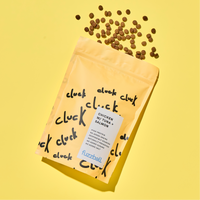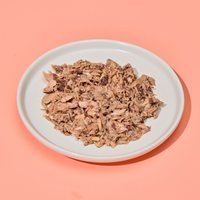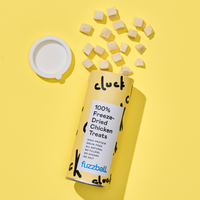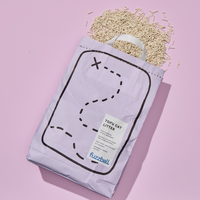Hydration plays a vital role in your cat’s overall health, influencing everything from kidney function to energy levels. Because cats naturally have a low thirst drive, especially those on dry food diets, they’re more prone to dehydration than many owners realise.
Ensuring your cat gets enough fluids is one of the most important steps you can take to support their long-term wellbeing, prevent urinary issues, and promote a healthy digestive system. From subtle behaviour changes to medical complications, even mild dehydration can have wide-reaching effects.
Why Is Proper Hydration Important For Cats?
Hydration is when your cat has balanced electrolytes, fluids, and specific minerals in their body and maintaining this balance is extremely important. Hydration in your cat is important because it affects everything from digestion to organ function. It also helps decrease the chance of urinary stones in your cat and helps flush the kidneys of any toxins.
What Are the Signs Of Dehydration In Cats?
If your cat isn’t properly hydrated, they might show certain signs. This includes dry gums, lethargy, loss of appetite, decreased skin elasticity, and an elevated heart rate. If you notice any of the mentioned signs, you need to contact your vet so they can give you fluids to rehydrate your cat.
Causes Of Dehydration In Cats
There are many different causes of dehydration in cats. This includes:
|
Cause |
Description |
|
Vomiting and Diarrhoea |
Loss of fluids through frequent vomiting or loose stools can quickly dehydrate a cat. |
|
Heat and High Temperatures |
Exposure to hot weather or lack of shade can lead to excessive fluid loss. |
|
Kidney Disease |
Chronic kidney issues often cause increased urination, leading to dehydration. |
|
Lack of Water Intake |
Cats may refuse to drink due to illness, stress, or unclean water bowls. |
|
Fever or Infection |
Illnesses with fever can increase fluid loss and reduce a cat’s urge to drink. |
|
Hyperthyroidism |
This condition speeds up metabolism, causing increased thirst and urination. |
|
Trauma or Shock |
Blood loss or severe stress can impair fluid balance, leading to dehydration. |
What Should I Do If My Cat Is Dehydrated?
The most crucial thing to do is to call your veterinarian right away if you think your cat may be dehydrated. Dehydration calls for immediate veterinarian care because it can be a significant indicator of an underlying medical condition. Offering wet food, adding water to their meal, or giving them tuna water or low-sodium chicken broth are some gentle home therapies you can attempt while you wait for veterinary attention.

How Much Water Should a Cat Drink?
Depending on their weight and whether they eat dry cat food or wet cat food, cats require different quantities of water.
Because of the peculiar shape of their tongues, even the healthiest cats have trouble drinking the recommended amount of water. Some cats can consume excessive amounts of water, even though many cats have trouble staying hydrated.
How Can I Keep My Cat Hydrated?
Cats are naturally inquisitive. You may capitalise on this curiosity by providing water in various containers and in various areas of your house to make sure your cat is getting enough water. Here are some tips on how you can keep your cat hydrated:
Use Pet Water Fountains
For cats who are attracted to running water, pet water fountains are an excellent option. A fountain-style water bowl can encourage increased drinking because many cats are drawn to moving water.
Many pet water fountains have water filters to help make sure your cat is drinking the purest, freshest water possible, in addition to offering a source of circulating, running water that is far more environmentally friendly than leaving a faucet running. However, pet water fountains require routine cleaning, much like bowls.
Feed Your Cat Wet Food
Including wet cat food in your cat's diet is one of the simplest methods to make sure they are getting enough water. Simply said, canned cat food is more moist, but if necessary, you may add water and stock to make it even wetter.
Some cats like a liquid consistency, which this will help offer them. You might try using some kibble soaked in water if your cat refuses to eat wet cat food.
What You Need To Know About Your Cat’s Water Bowl
Cats are funny creatures, and the location and type of bowl you use can actually encourage your cat to drink more water. So here’s what you need to know about your cat’s water bowl:
Choose the Right Water Bowl
Your cat's whiskers may be uncomfortably touched by the deep, narrow water bowl they now use. To test if your cat drinks more, try changing their water bowl to a shallower, wider dish with a narrower lip.
Put the Water Bowl In the Right Place
It’s tempting to put your cat’s water bowl in a corner or somewhere where you can’t see it. However, cats don’t like this. They want their water to be in a location where they can see their surroundings when they look up from the water bowl. So, put your cat’s water bowl somewhere where they don’t have to worry about someone sneaking up behind them.
Keep Their Water Fresh
The longer water sits, the more hair, dirt, dust, and other particles it collects. All of this can make a cat less inclined to drink from their bowl. Make sure you keep your cat’s water bowl fresh and clean. You can put fresh water in the bowl at least once a day.

How Do I Know If My Cat Is Drinking Enough Water?
To check if your cat is drinking enough water, keep an eye on their water bowl. If the water gets less than you know that your cat is drinking enough water and is hydrated. If you can’t estimate from the water bowl, you can also check their gums and their urination patterns.
Can The Location Of the Water Bowl Affect How Much Water My Cat Drinks?
A cat's water intake can be greatly impacted by where their water bowl is placed. Some cats may have particular tastes in where their water is placed, and cats frequently prefer to drink from areas apart from where they eat.
Can The Type Of Water Bowl Affect How Much Water My Cat Drinks?
A cat's water intake can vary depending on the style of bowl. The material, shape, and cleanliness of the bowl can influence a cat's inclination to drink from it, and cats might be finicky about the water they drink.
Keeping your cat hydrated isn’t just about filling a water bowl; it’s about understanding your cat’s preferences, health needs, and environment. From offering wet food and broth-infused treats to investing in a water fountain and choosing the right bowl placement, small adjustments can make a big difference.
Dehydration can lead to serious health problems, so spotting the signs early and encouraging better hydration habits is essential. With the right care and attention, you can help your cat stay happy, healthy, and properly hydrated every day.






